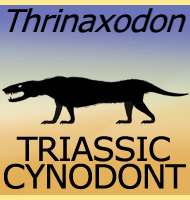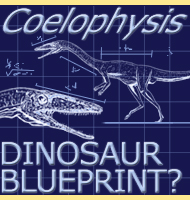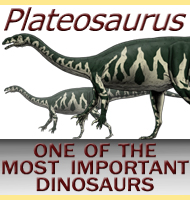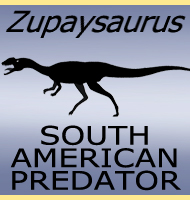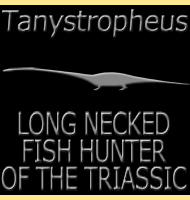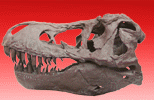

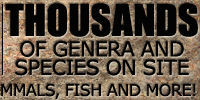
Tritylodon
Name:
Tritylodon
(Three cusped teeth).
Phonetic: Try-ty-lo-don.
Named By: Richard Owen - 1884.
Synonyms: Triglyphus.
Classification: Chordata, Synapsida,
Therapsida, Cynodontia, Tritylodontidae.
Species: T. longaevus
(type), T. maximus.
Diet: Herbivore.
Size: About 30 centimetres long.
Known locations: South Africa - Elliot
Formation. Lesotho - Elliot Formation.
Time period: Norian of the Triassic to the
Hettangian of the Jurassic.
Fossil representation: Several individuals.
As
far as cynodonts go Tritylodon was fairly
unremarkable and very similar
to the generic form of other cynodonts. Tritylodon
had a round body
and short limbs, adaptations for a burrowing lifestyle. Furthermore
Tritylodon is noted for having enlarged incisor
teeth which still would
have been partly visible when the mouth was closed, and like relative
tritylodontid genera, Tritylodon is thought to
have been herbivorous.
At
the time of writing Tritylodon is only known from
South Africa and
Lesotho. At least one specimen of Tritylodon is
known from the Lower
Elliot Formation, placing the earliest appearance of the genus in the
late Triassic, while most of the known specimens of Tritylodon
are
currently known from the Upper Elliot Formation which suggests that the
genus became far more widespread during the early Jurassic.
Additional remains possibly from the Sinemurian and Pliensbachian
further show that as a genus Tritylodon was quite
successful.
Further reading
- On the skull and dentition of a Triassic mammal (Tritylodon
long�vus, Owen) from South Africa. - Quarterly Journal of the
Geological Society 40:146-152. - Ricahrd Owen - 1884.
- Sedimentology and vertebrate taphonomy of the Tritylodon Acme
Zone: A reworked palaeosol in the Lower Jurassic Elliot Formation,
Karoo Supergroup, South Africa. - Palaeogeography,
Palaeoclimatology, Palaeoecology 131: 29–50. - R. Smith
& J. Kitching - 1997.
----------------------------------------------------------------------------
Random favourites
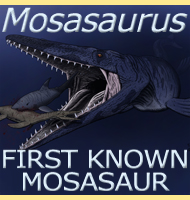 |
 |
 |
